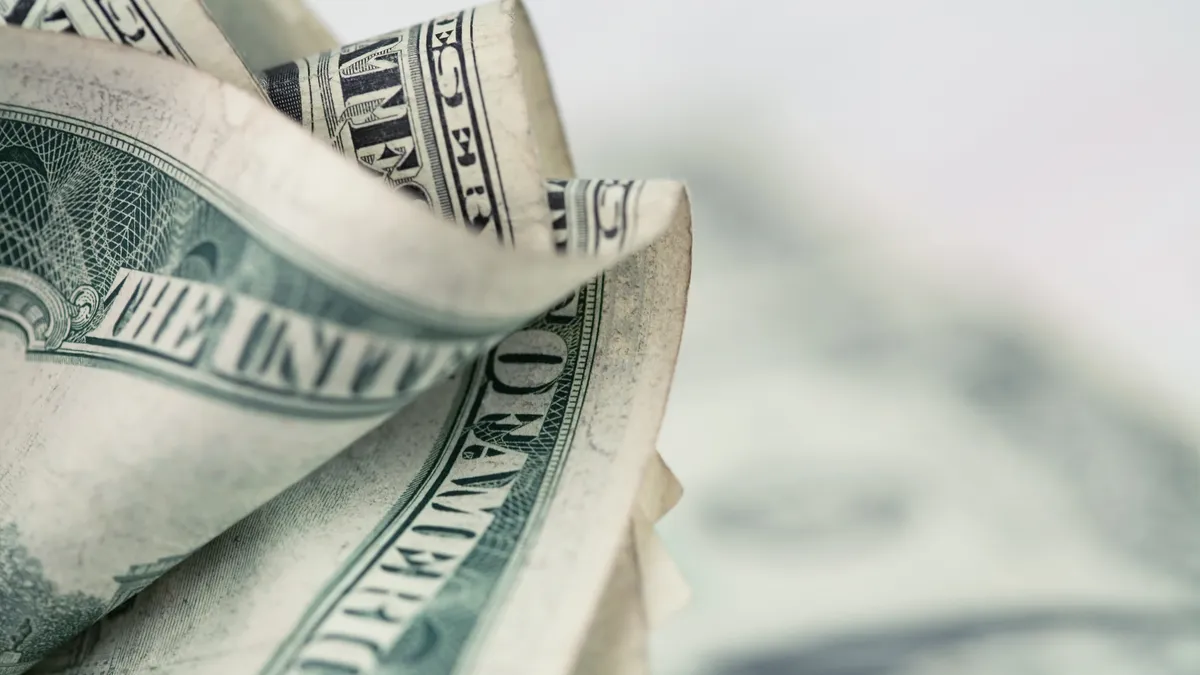Dive Brief:
- The consumer price index in March rose more than forecast for the third straight month, prompting futures traders to bet that 2024 will end with fewer Federal Reserve cuts to borrowing costs.
- Big gains in transportation and shelter prices helped push up the CPI 0.4% in March and 3.5% on a 12-month basis, well above the Fed’s 2% target, the Bureau of Labor Statistics said Wednesday. The rise in core CPI, excluding volatile food and energy prices, also exceeded expectations, increasing 0.4% for the month and 3.8% over the previous year.
- “In one line: Ouch,” Pantheon Macroeconomics Chief Economist Ian Shepherdson said Wednesday in an email to clients. “This Fed is super-cautious and loud voices in the commentariat will be yelling at them not to ease after these numbers.”
Dive Insight:
After the release of the inflation report, traders in interest rate futures saw only 17% odds that the central bank will conclude 2024 having trimmed the federal funds rate by more than a half percentage point. On Tuesday they set a 56% probability of such an outcome.
Traders now expect the Fed to make the first quarter point cut in September rather than in June, according to the CME FedWatch Tool.
The central bank since July has held the benchmark interest rate at a 23-year high ranging from 5.25% to 5.5%.
“We think that the March CPI report points to significant risk of a delay to the start of Fed easing,” Bank of America Securities said in a research report to clients.
“Unfavorable base effects on inflation in the second half of this year mean that the Fed could be forced to delay the start of any easing cycle to December of this year or March next year,” Bank of America said.
Before Wednesday, reports showed that economic growth and hiring outstripped forecasts, undercutting predictions of an interest rate cut in June. The economy probably expanded at a 2.4% annual rate last quarter, according to the Atlanta Fed.
Meanwhile, employers increased payrolls last month by a higher-than-forecast 303,000 for the biggest gain in 10 months, the Labor Department reported Friday. The unemployment rate dipped to 3.8% from 3.9% in February.
Fed officials on March 20 forecast that the central bank will likely trim the federal funds rate by the end of this year by about three-quarters of a percentage point, according to a median projection.
Since then, some Fed officials have backed away from the estimate:
-
Fed Governor Michelle Bowman on Friday raised the prospect that stubborn price pressures may compel the central bank to once again increase borrowing costs.
-
Minneapolis Fed President Neel Kashkari said in an April 4 interview with Pensions & Investments that “if we continue to be surprised that inflation is more persistent, the first thing I think we would do is just hold rates here for an extended period of time to see if that ultimately does the trick.”
-
Atlanta Fed President Raphael Bostic on Tuesday predicted one quarter-point rate cut this year while reiterating his view that the Fed may need to forgo a reduction altogether in 2024. “Inflation is only going to come down at a very slow pace through the course of this year,” he said in a Yahoo Finance interview.
Central Bank officials during a March 19-20 meeting said that monetary policy was well calibrated to allow for holding the federal funds rate at the current level should price pressures remain high.
Fed officials believed policy “remained well positioned to respond to evolving economic conditions and risks to the outlook, including the possibility of maintaining the current restrictive policy stance for longer should the disinflation process slow,” according to minutes of their gathering released Wednesday.












